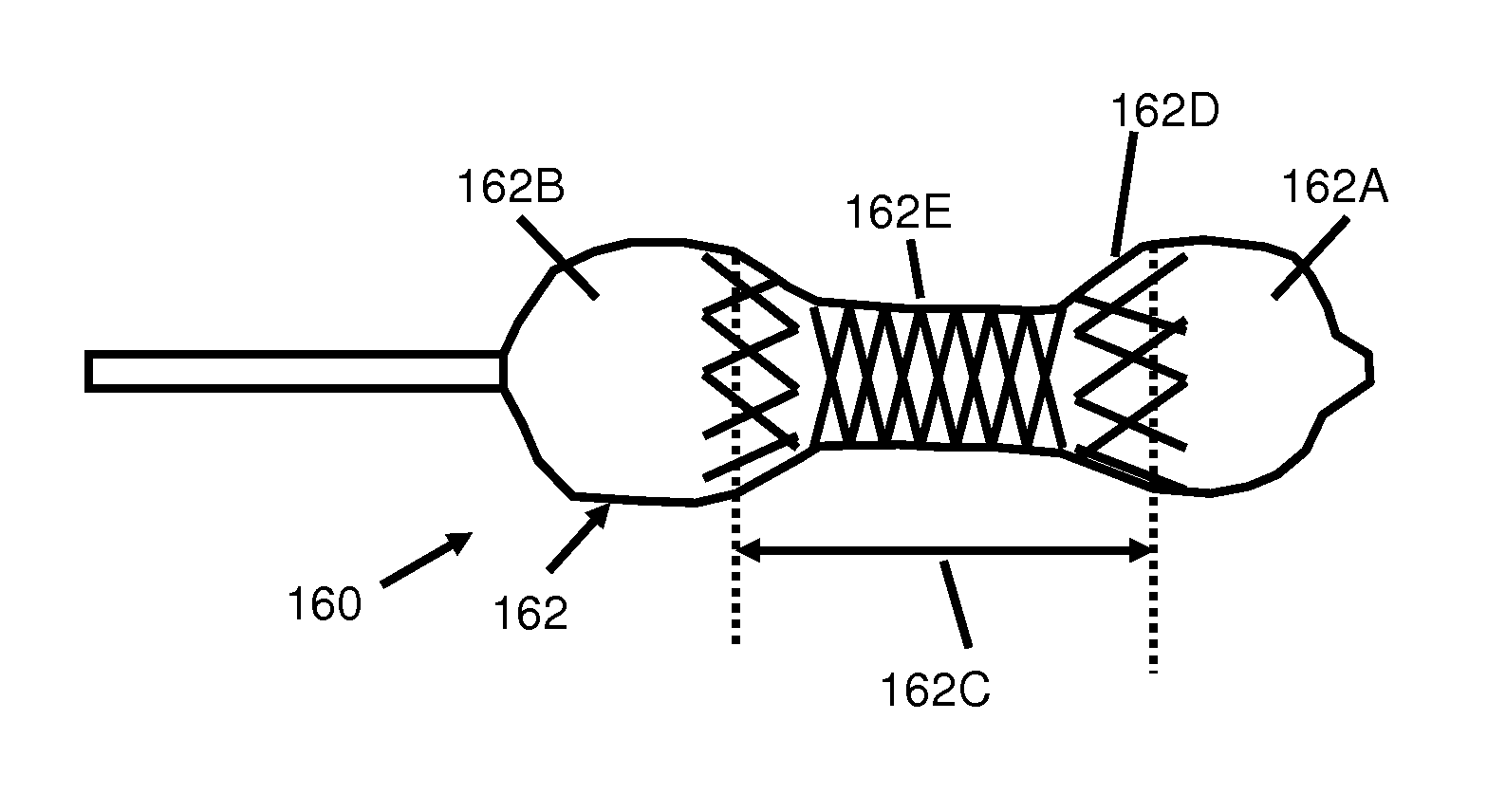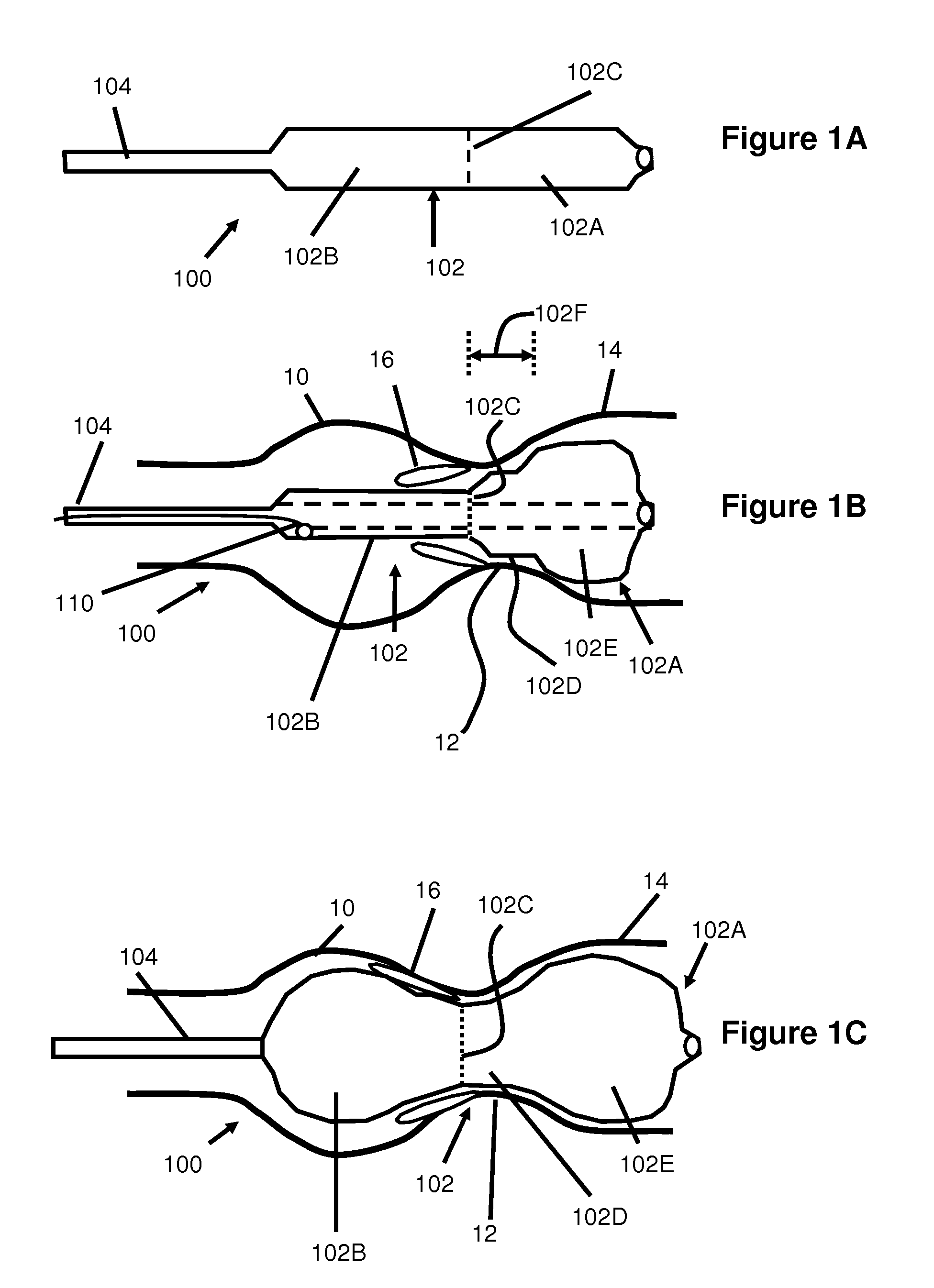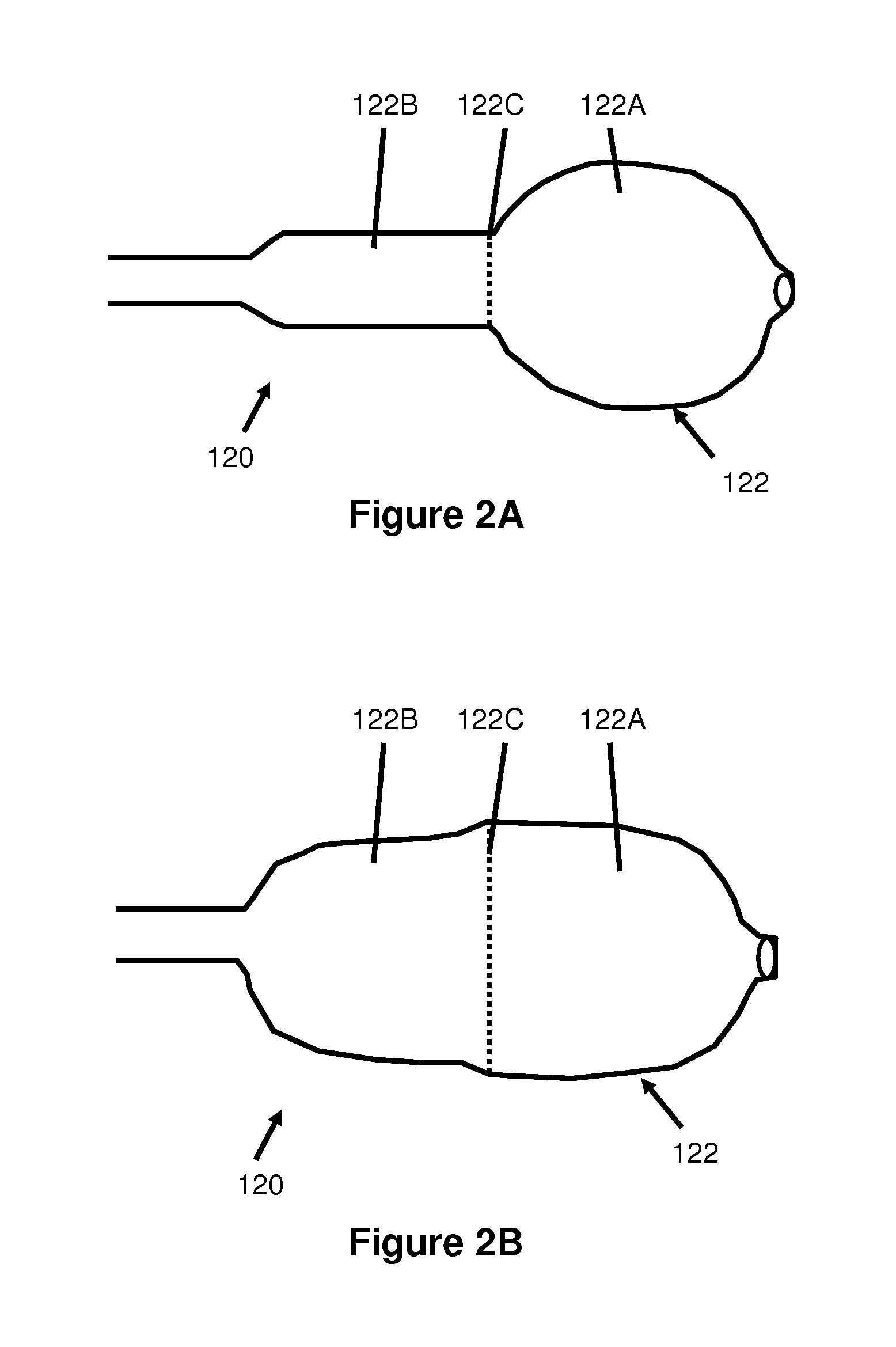Positionable valvuloplasty catheter
a valvuloplasty and catheter technology, applied in the field of balloon catheters, can solve the problems of patient death, inability to accurately place the valvuloplasty catheter, and blood flow, and achieve the effects of improving the locking of the balloon, reducing the diametric magnitude of the dilation, and increasing the slope of the dp/dv curv
- Summary
- Abstract
- Description
- Claims
- Application Information
AI Technical Summary
Benefits of technology
Problems solved by technology
Method used
Image
Examples
Embodiment Construction
[0024]Specific embodiments of the invention will now be described with reference to the accompanying drawings. This invention may, however, be embodied in many different forms and should not be construed as limited to the embodiments set forth herein; rather, these embodiments are provided so that this disclosure will be thorough and complete, and will fully convey the scope of the invention to those skilled in the art. The terminology used in the detailed description of the embodiments illustrated in the accompanying drawings is not intended to be limiting of the invention. In the drawings, like numbers refer to like elements.
[0025]The present invention includes a balloon dilatation catheter for positioning within a tubular vessel of the body and dilating a stenotic portion of the vessel. When used for valvuloplasty, the distal region or portion of the balloon is positioned in the left ventricular outflow tract and is inflated first to help position the balloon to a desirable locat...
PUM
 Login to View More
Login to View More Abstract
Description
Claims
Application Information
 Login to View More
Login to View More - R&D
- Intellectual Property
- Life Sciences
- Materials
- Tech Scout
- Unparalleled Data Quality
- Higher Quality Content
- 60% Fewer Hallucinations
Browse by: Latest US Patents, China's latest patents, Technical Efficacy Thesaurus, Application Domain, Technology Topic, Popular Technical Reports.
© 2025 PatSnap. All rights reserved.Legal|Privacy policy|Modern Slavery Act Transparency Statement|Sitemap|About US| Contact US: help@patsnap.com



